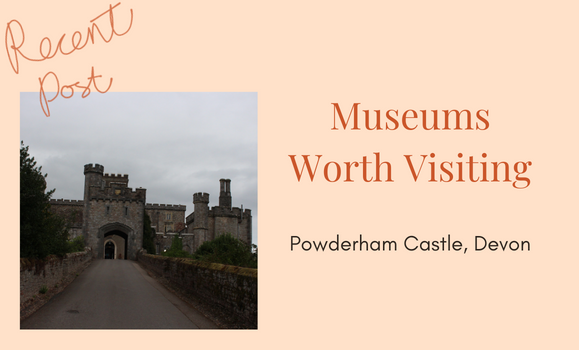A Step Back in Time - Cromwell Heritage Precinct
Throughout history we hear of towns and villages being destroyed for dams and with it losing hundreds of years of history. What if we could do this whilst also saving historic buildings and heritage sites? That's exactly what has been done in Cromwell, New Zealand.
The town that is known today as Cromwell was formerly known simply as 'The Junction'. It was renamed in 1863 after the 17th Century English leader, Oliver Cromwell.
Cromwell is a former gold rush town in the heart of Central Otago on New Zealand's South Island. Gold mining by individuals led the way to larger dredging companies taking advantage of the area's valuable assets. By 1910, dredging had waned with sheep farming and fruit growing replacing gold mining as the major industry.
Between the First and Second World Wars, the population of Cromwell did not exceed 600 people, slowly creeping up to 1000 by 1966.
Creating Clyde Dam
In 1977 the decision was made to build a dam 23km away from Cromwell in a town called Clyde to produce hydroelectric power. The Clyde Dam was to be and still remains the largest concrete dam in
New Zealand with a million metres of concrete used in its production.
Lake Dunstan was to be formed behind the new dam. This venture required the purchase of 2500 hectares of land including 19 orchards, 50 commercial premises and 60 residences which resulted in 280 people being displaced. 60km of roads were to be constructed in addition to multiple bridges and culverts along the way.
As the old town was flooded, a new business area needed to be created in Cromwell. Shops, offices and banks were to be relocated to the new Mall whilst light industries would be moved to a new industrial area in the town. Lake Dunstan began to be filled in April 1992 and officially opened in April 1994. Central Otago now had a brand new hydroelectric dam and huge lake but what was to come of all those historic buildings that were potentially lost in the flood?
Old Cromwell Town
In 1985 some local residents decided that they did not want to see an integral part of Cromwell's history to be lost to the flood. Together they decided that they wanted to preserve the buildings from old Cromwell's Main Street for future generations.
By 1987 the Old Cromwell Inc. Society had launched their mission and had received $30,000 to begin their heritage project. Funded by various local groups and community funds, the site was transformed from a wasteland into a heritage hotspot for the public to enjoy. Initially 8 buildings from the old commercial area were chosen for reconstruction on Melmore Terrace which sits next to the Kawarau River.
Old Cromwell Town or the Cromwell Heritage Precinct was designed to resemble a believable town. The Board responsible for planning the new heritage area wanted to maintain the authenticity of 'street life' taking place alongside industries and activities so reconstructed a commercial, residential and rural zone where land is divided into distinct sections.
Today, some buildings have been developed inside in a museum style to take you back to the gold rush era whilst other are tenanted by artisan businesses in order to fund the continuous preservation of the heritage precinct. You can grab a coffee and a slice of cake from one of the cafés and soak up the history whilst also enjoying the spectacular views of Cromwell and neighbouring Bannockburn.
Further Reading:
"Cromwell District," Te Ara: Encyclopaedia of New Zealand. Accessed 9 May 2020. https://teara.govt.nz/en/otago-places/page-16
"Cromwell Heritage Precinct," Cromwell Heritage Precinct. Accessed 9 May 2020 http://www.cromwellheritageprecinct.co.nz/
The town that is known today as Cromwell was formerly known simply as 'The Junction'. It was renamed in 1863 after the 17th Century English leader, Oliver Cromwell.
Cromwell is a former gold rush town in the heart of Central Otago on New Zealand's South Island. Gold mining by individuals led the way to larger dredging companies taking advantage of the area's valuable assets. By 1910, dredging had waned with sheep farming and fruit growing replacing gold mining as the major industry.
Between the First and Second World Wars, the population of Cromwell did not exceed 600 people, slowly creeping up to 1000 by 1966.
 |
| The Bannockburn Inlet of Lake Dunstan 2020 |
Creating Clyde Dam
In 1977 the decision was made to build a dam 23km away from Cromwell in a town called Clyde to produce hydroelectric power. The Clyde Dam was to be and still remains the largest concrete dam in
New Zealand with a million metres of concrete used in its production.
Lake Dunstan was to be formed behind the new dam. This venture required the purchase of 2500 hectares of land including 19 orchards, 50 commercial premises and 60 residences which resulted in 280 people being displaced. 60km of roads were to be constructed in addition to multiple bridges and culverts along the way.
As the old town was flooded, a new business area needed to be created in Cromwell. Shops, offices and banks were to be relocated to the new Mall whilst light industries would be moved to a new industrial area in the town. Lake Dunstan began to be filled in April 1992 and officially opened in April 1994. Central Otago now had a brand new hydroelectric dam and huge lake but what was to come of all those historic buildings that were potentially lost in the flood?
Old Cromwell Town
In 1985 some local residents decided that they did not want to see an integral part of Cromwell's history to be lost to the flood. Together they decided that they wanted to preserve the buildings from old Cromwell's Main Street for future generations.
By 1987 the Old Cromwell Inc. Society had launched their mission and had received $30,000 to begin their heritage project. Funded by various local groups and community funds, the site was transformed from a wasteland into a heritage hotspot for the public to enjoy. Initially 8 buildings from the old commercial area were chosen for reconstruction on Melmore Terrace which sits next to the Kawarau River.
 |
| The site for the Post Office was gazetted in 1869 and a small wooden hut erected. A move to build a more substantial building was made in February 1871 when a contract was let to John Taylor. |
Today, some buildings have been developed inside in a museum style to take you back to the gold rush era whilst other are tenanted by artisan businesses in order to fund the continuous preservation of the heritage precinct. You can grab a coffee and a slice of cake from one of the cafés and soak up the history whilst also enjoying the spectacular views of Cromwell and neighbouring Bannockburn.
Further Reading:
"Cromwell District," Te Ara: Encyclopaedia of New Zealand. Accessed 9 May 2020. https://teara.govt.nz/en/otago-places/page-16
"Cromwell Heritage Precinct," Cromwell Heritage Precinct. Accessed 9 May 2020 http://www.cromwellheritageprecinct.co.nz/










